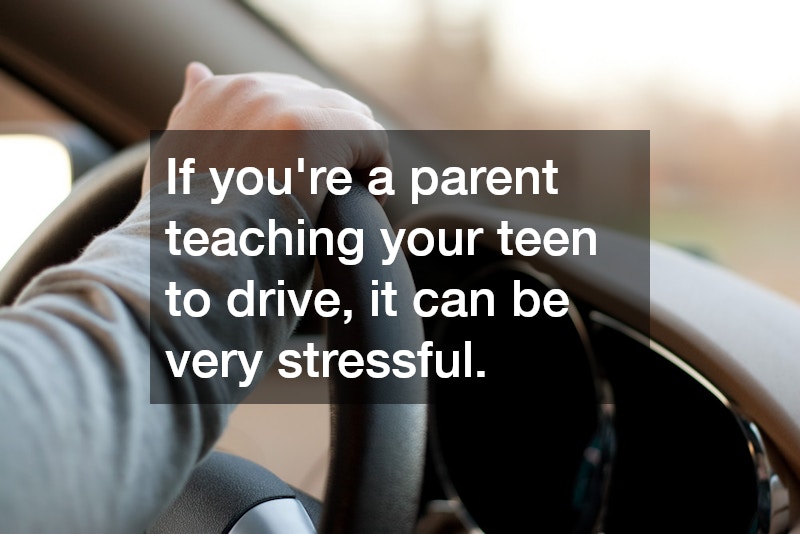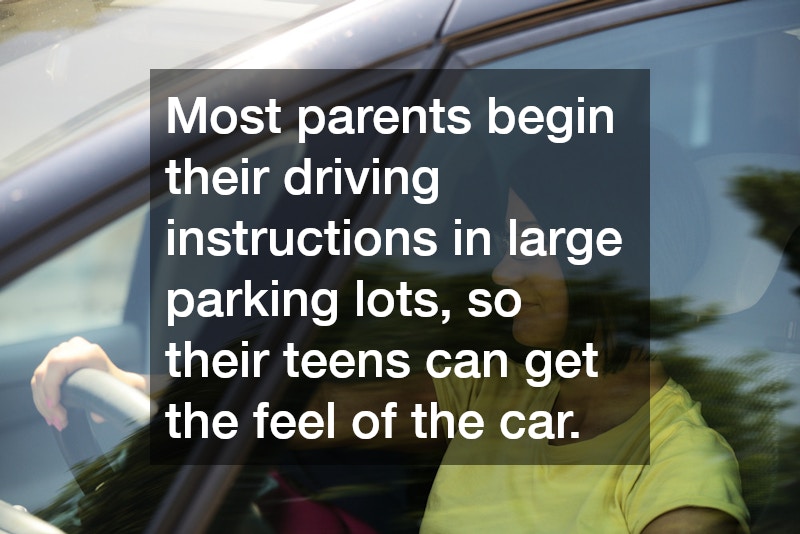
If you’re a parent teaching your teen to drive, it can be very stressful. Begin the driving instructions by explaining that your teens need to put safety first. This means placing a great deal of emphasis on defensive driving. For example, by explaining the safe use of the express lane, you can help your teen understand express lane defensive driving.

According to NHTSA, parents can begin by explaining the importance of driver responsibility. Emphasize the necessity to avoid distracted driving, such as turning off their phone and leaving their radio off until they are familiar with the mechanics of driving. According to Puedo Manejar, teach them the Golden Rule of Driving: to treat other drivers as you would want to be treated. Show your teens how to treat other drivers with courtesy, even if the other driver cuts them off.

Most parents begin their driving instructions in large parking lots, so their teens can get the feel of the car. After that, your teen can move on to suburban streets. As your teens begin mastering driving on neighboring roads and then move on to highways, you will start to see if they are successfully mastering careful driving techniques.
Did you know that one of the leading causes of death among teens aged 15-19 is car accidents? Teens are ten times more likely to be involved in a car crash in their first year on the road.
Other than their inexperience on the road, there are also other risk factors. Among them is the inability to recognize or underestimating hazardous driving conditions. Distractions such as texting or talking on the phone reduce a teen’s reaction time to that of a 70-year-old. This doubles the likelihood of an accident.
The safety of a child is the biggest concern for parents. Unfortunately, as your child grows, the less control of their safety you have, and teens can be reckless at times if not always. Therefore, once your child reaches driving age, you must ensure that they are well prepared for the road.
To achieve this, you should give your child practice driving sessions even before signing them up for a driving course or driving classes. As your child’s first driving instructor, what you teach them will be their foundation as a driver.
Start With the Basics
The first practice driving lesson should be in your driveway. Begin by introducing your child to all the controls. Once they are familiar, sensitize the importance of awareness. This won’t come naturally.
Since the driveway will be the starting point for most of their rides, this is where you start instilling good habits. Before, the real driving begins, have them exit the car and check for around for obstacles or toys.
Their driving lesson should begin by learning how to drive off your property. Let them know that they should always face the direction they are driving towards. If they have to reverse the car, then they should be looking at the rear of the vehicle until they bring the car to a complete stop.
At the end of the driveway, teach them to check both sides and confirm there’s no oncoming traffic before proceeding. At this time, they may feel like they are getting the hang of it and want to speed up a little.
As they are still a novice driver, things need to happen slowly. The goal here is to teach them to be in full control of the car at all times.
Bringing the Car to a Complete Stop
During their first driving lessons, avoid the roads and use empty parking lots. This is where they can develop essential driving skills without pressure from external elements. The first thing to focus on is bringing the car to a complete stop quickly. Remember to remind them that
- They should pivot the foot from the gas pedal to the brake pedal.
- They should not take their eyes off the road while doing so.
Let them start practicing at a speed of five to ten miles. Stopping the car should be intuitive for drivers. Keep practicing until their reaction speed is ideal.
Dealing with Corners
Now that your student can bring the stop the car in case of an emergency, it’s time to teach them how to navigate safely. The parking space rows are the perfect tool for them to practice turning the car. Alternatively, you can use cones to mark practice corners.
The goal is to prepare them for real traffic situations. Ensure that they turn on the signal every time, even if it’s a practice driving session in an empty parking lot. Enforcing this habit early on will ensure it sticks with them.
If they need to brake like it’s an emergency, they’re probably driving too fast near the bend. On the other hand, if they are driving too slowly, they will need to hit the gas pedal as they turn.
Have them practice until they can judge the corners perfectly and have full control of the car as they turn.
In Conclusion
Practice driving sessions are an incredible way to ensure your child will be safe as they transition into drivers. It also gives you a great and rare opportunity to bond with them. For the sessions to be productive, you must be calm and patient. This will help the child relax and learn faster.